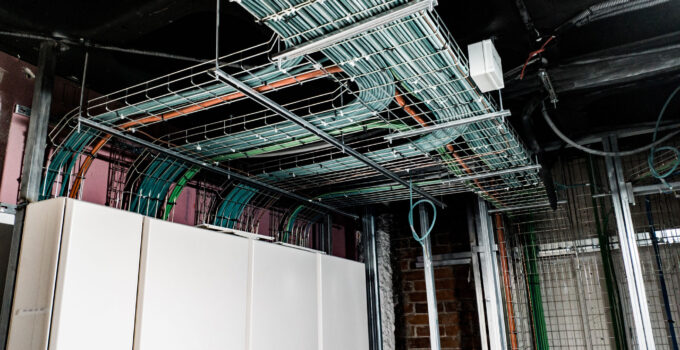If you’re intending to get some electrical work done on your property, now’s the time to become educated on cable trays. These handy devices can play a significant role when it comes to wiring. In this article, we’ll give you the lowdown on cable trays, including what’s to like and what’s to loathe, as well as how to optimize your cable trays for ultimate efficiency and effectiveness.
Page Contents
What Are Cable Trays?
Cable trays are a type of cable management system used to support and organize cables in residential, commercial, and industrial buildings. They also help with safety by protecting cables and wiring, while also making it easier to access and maintain them. You will often see them used in new construction or remodels, particularly in basements, attics, and utility rooms.
However, cable trays can be especially useful in spaces with a lot of electronic equipment or where the cable and wiring infrastructure is being upgraded. They can be used to route and organize cables for entertainment systems, home automation systems, and other electronic devices.
What Are the Different Types of Cable Trays?
Cable trays are typically made of metal, such as steel or aluminum, and come in a range of styles. The most common styles you will see include:
- Ladder: As the name suggests, this type of cable tray has a ladder-like design with rungs that run parallel to the length of the tray. The ladder design ensures you have easy access to the cables, so you’ll often see ladder cable trays used in spaces where people need to frequently access or maintain the cables.
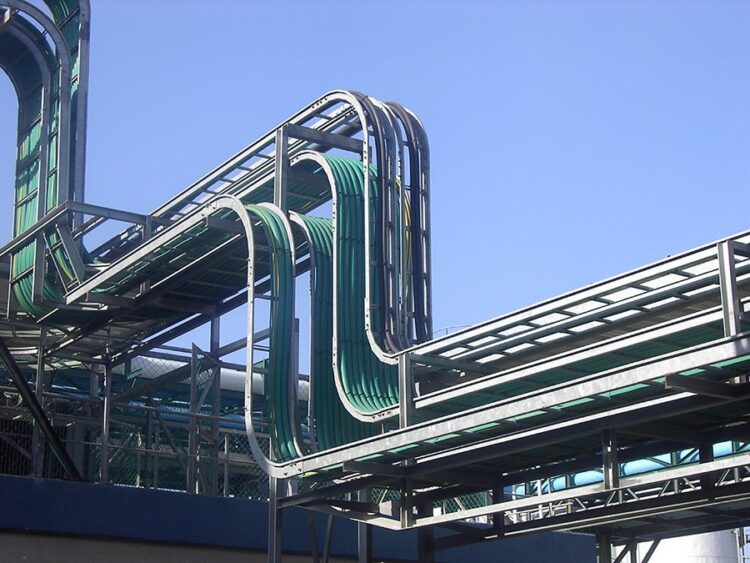
Source: forumautomation.com
- Trough: This type of cable tray is like a ladder tray, but instead of rungs, it has a trough-like design that fully encloses the cables. Trough trays are often used in spaces where cables need to be protected from dust, debris, and other environmental factors.
- Solid Bottom: Having a solid bottom to the tray makes this style perfect for keeping small parts and debris from falling through. You’ll see solid bottom trays used anywhere cables need to be protected from liquids or where there is a lot of foot traffic.
- Ventilated: This type of cable tray has a perforated design that allows air to circulate through the tray. This can help reduce heat build-up in the tray, particularly when the cables are carrying high-power loads. You might sometimes see these cable trays referred to as wire mesh or perforated options.
While these are just the most common types, there are also variations and combinations of the above types available. You want to choose a cable tray that best suits your cabling situation.
Do You Know These Pros of Cable Trays?
Given cable trays are used in a wide variety of environments, from residential to industrial, it’s fair to expect that there are plenty of advantages to using them. These are our top 5:
- They give you a safe and organized way to support and protect cables and wiring. Otherwise, cables can become tangled, making troubleshooting, and locating problems far harder. Similarly, unsupported cables can be affected by vibrations and other physical stresses, which can lead to poor power and signal transmission.
- They make it easy to access and maintain cables, which can reduce downtime and repair costs for you regarding cable issues.
- They give you enhanced flexibility when it comes to changing or upgrading your building’s cabling. Rather than using pipes to run your cables through, trays allow you to swap out cables more easily and as needed.
- They can also help to reduce the risk of fire by keeping cables separated and providing a clear pathway for heat to dissipate.
- They also protect the cables from damage, including environmental factors like moisture, dust, and debris. Additionally, as they are made from corrosion-resistant materials, they can be used in harsh environments.
What Disadvantages Should You Keep in Mind When Using Cable Trays?
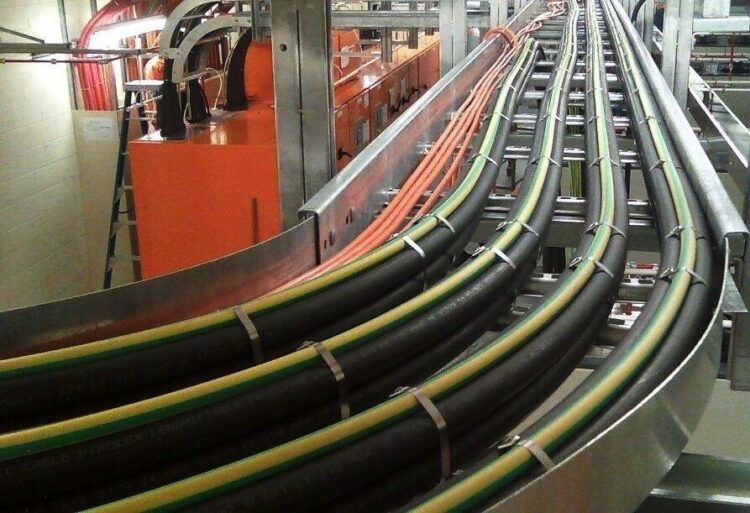
Source: instrumentationtools.com
Of course, everything has its cons, and that includes cable trays.
- They can be expensive to install, especially if they need to be custom-made. However, they are likely to pay for themselves when it comes to protecting your cables.
- They can also be heavy, which can make them difficult to install in some applications.
- They require regular maintenance and inspection to ensure that they are functioning properly and that the cables they support are not damaged. However, if you’re getting cable trays, you’re likely to be wanting to regularly check and maintain the cables anyway, so you can check on the trays at the same time.
- They can also be difficult to modify or expand once they are installed. But so too are traditional pipes. Therefore, it’s best to think ahead about whether you want to build some flexibility into your cabling system before beginning any work.
While these cons are certainly true when it comes to cable trays, it’s all about balancing the good with the bad. The advantages you get from using cable trays may outweigh these negatives.
Getting More Out of Your Cable Tray Investment
If you’re ready to use cable trays in your next project, it’s a good idea to know how to optimize their efficiency and effectiveness.
Look Into Cable Tray Accessories
What are cable tray accessories? Well, there are quite a few to choose from! But these cable tray accessories aim to improve functionality while making them easier to install and maintain too.
- Covers: These are used to cover the top of the trays to protect the cables inside from dust, debris, and other environmental factors.
- Dividers: These are used to separate and organize your different types of cables within the tray.
- Supports: To ensure your cable tray can properly support the cables inside, you’ll need support. But how often do you support cable trays? Aim to add supports at regular intervals along the tray’s length. Check them regularly to see if any more are needed.
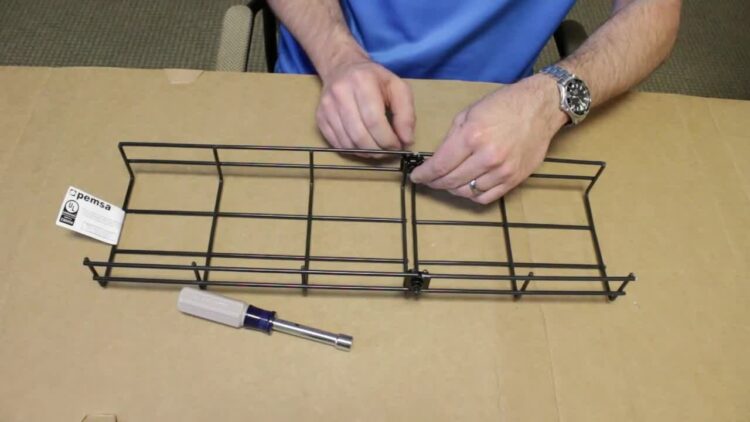
Source: chatsworth.com
- Hangers: These are used to hang cable trays from the ceiling or other overhead structures.
- Brackets: These are used to mount cable trays to walls or other vertical surfaces.
- Ladders: These are used to provide additional support for cable trays in areas where cables need to be frequently accessed or maintained.
- End closures: These are used to close the ends of cable trays to further protect cables from dust, debris, and other environmental factors.
- Grounding kit: These are used to ground the cable tray, which can be useful in preventing static electricity, electromagnetic interference (EMI), and lightning strikes. Like supports, you’ll need to ground your cable tray at regular intervals.
Hire a Professional
While there are plenty of DIY jobs you can do around your property, anything electrical should always be trusted by professionals This includes setting up and laying out cable trays. To get the most out of your cable trays, you need to know which type is best for your project, as well as how to set them up correctly, along with the cables running through them.
Your experienced electrician won’t be wondering if cable trays need to be earthed. This high-level electrical system skillset is difficult to learn if you haven’t had professional training, so don’t risk it. Call in the pros.
Need Cable Trays for Your Next Project?
Cable trays make an excellent alternative to pipes when it comes to protecting and organizing cables. They allow you quick and easy access to the cables, as well as ensure that they are protected from dust and debris while remaining well-ventilated and grounded to minimize the risk of fires. While they have their downsides, like being a bit more expensive and needing to be checked regularly, they are worth the investment.
If you’re looking for cable trays to keep your cables safe and secure, be sure to check out the range at JMS Electrical Supplies. Their selection of top-level brands ensures that you will get a quality product you can rely on, no matter your project’s particular requirements. Plus, they have lots of other great electrical gear to help you get the job done efficiently and properly. So, check out their online store today!
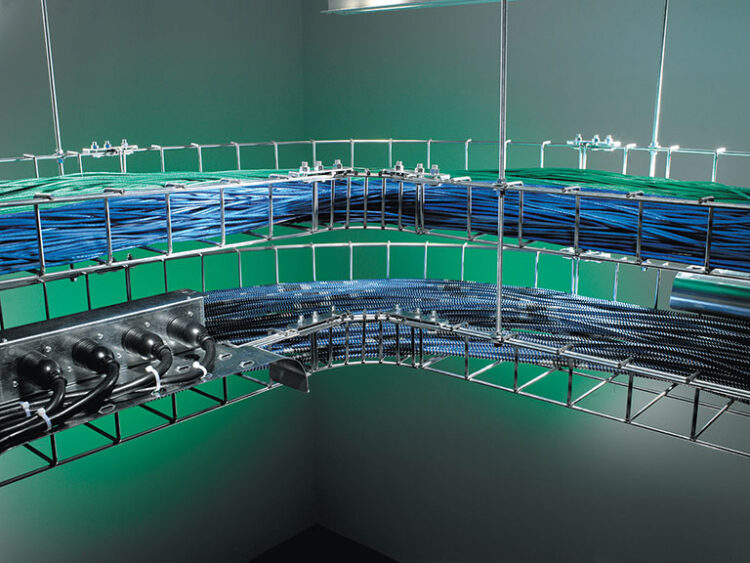
Source: snaketray.com

